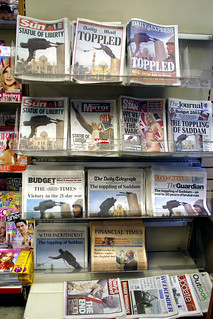In last week’s post about how to design an ad, I promised that I’d tackle how to write better ads.
The first thing you need to consider when writing ads is the headline. Some prefer to write it first, others last. I tend to put in a placeholder headline and then go back to it later. Sometimes, I just get a great idea straight off; other times I need some headline writing inspiration. Whichever you do, spend more time on the headline than anything else.
Copy before design
Write the copy before you tackle (or hand off) the design. It’s much easier to adjust copy to fit design (say too long for the space) than the other way around. Get it as final as possible before the design stage. If it’s going online keep it in plain text. Microsoft Word makes an awful mess when you upload it to the Web. And, never, ever use the text to HTML feature – that makes an even bigger mess.
Make a dummy
This is called a copywriter’s rough – it’s just a rough indication of where different elements should go (headline, illustration, etc). Be sure to indicate where the headlines and subheads are so that the designer can emphasize them.
It’s not about you
Readers don’t give a fat rat’s fanny about you. When you write your ad, focus on how you can help them with their problem (not how they can help you by buying).
Paint pictures when you write
Not literally, but with words. Show them how your service or product solves that problem. Use emotional triggers, then support the emotions with facts.
Prove it works
Write your ad with testimonials, demonstrations, or other social proof, like millions sold or thousands of subscribers. People don’t want to be “sold,” but they do want to buy. Make it easy for them to decide that your product will help them.





